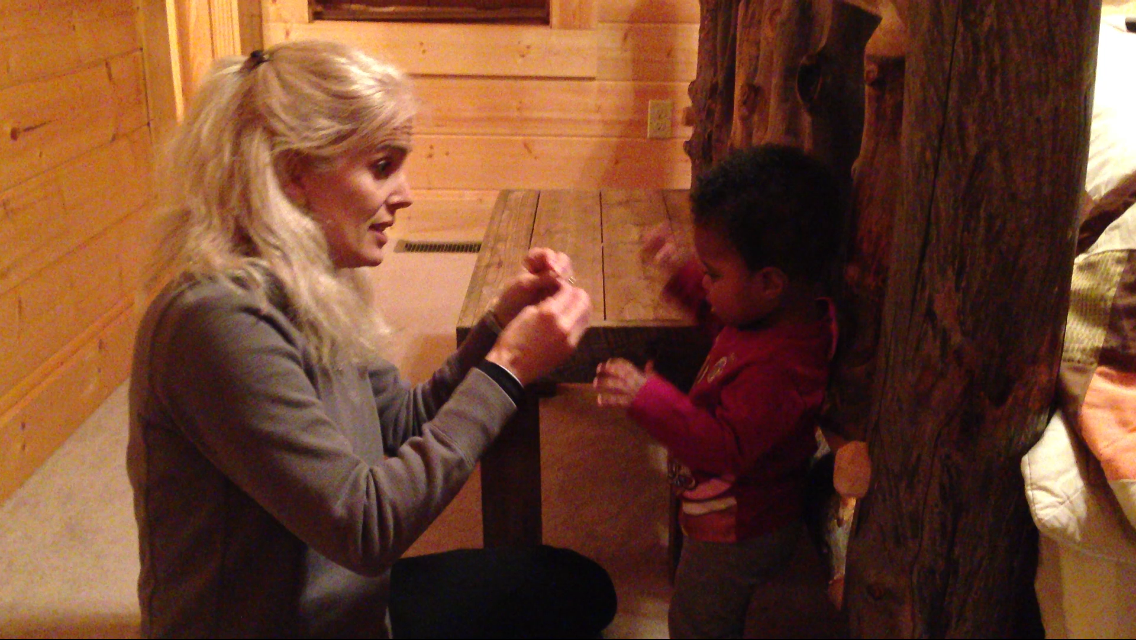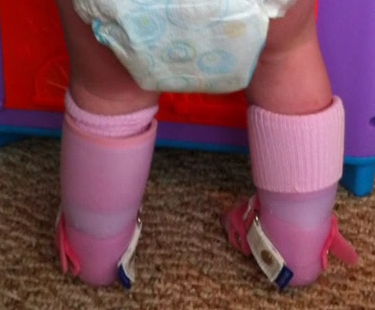I received emails today from two different moms concerned about their toddler falling. My first response would be that some falling is normal and necessary for the learning and maturation process of walking. Of course, we don’t ever want our children to fall down, but some falling will occur as they learn to maneuver with and without shoes and over a variety of surfaces.
One note: Eye and ear problems should be ruled out before asking your child to play the games suggested here. See your pediatrician first to let them do a preliminary check and maybe refer you to a specialist, if needed. For example, if your child has had a lot of recent ear infections, he/she may be falling due to issues with fluid in his/her ears.
If your toddler just began walking, keep him/her barefoot inside as much as possible to keep his/her feet in contact with surface changes and allow his/her foot to begin to mature in strength. When going outside, please put on shoes for protection. See my What kind of shoes should I buy page for more information on this.
If your toddler is still falling a lot and has been walking for more than just a couple of weeks, don’t panic but do work on some simple games to help him/her watch where he/she is going:
1.) Play STOP/START: Hold your toddler’s hand and say “Ready, Set, Go!” and help them “run” then say “STOP” and cue them to stop. Do this over and over and make it SILLY and FUN!!! Your child will begin to get the hang of the game and LOVE it. This will help him/her be more aware of your commands (particularly if they are running toward a busy street) and will help them learn to pay more attention.
2.) Play a the same game with an obstacle in your path (a kitchen chair). Run up to it and say “STOP” and then teach them to sneak around to go again! Use your imagination but give your child the idea to look where they are going.
3.) Go back to the floor to play….WHAT??? Yes to the floor!!! Get in a habit of spending some time each day doing a puzzle or blocks or something that you can communicate and have your child work on a fine motor skill. This will teach him/her to fall less. I promise! I have seen it dozens of times! Your little one needs to learn to slow down and play. Walking is so much fun but it breeds a lot of bulls in china shops!
4.) One leg standing: When your child is standing and playing at a surface like a couch, come behind him/her and help him/her prop a foot on a book or maybe your leg to work on standing on one leg. Switch legs often to keep him/her working without getting frustrated. To advance this, you can play follow the leader type games and have him/her try to lift one leg and stand briefly. Make sure he/she is doing both sides!
5.) Wobble standing: Take your child to a window or door where they can easily see outside. Have them stand on your legs as you kneel behind him/her. Let your child hold the window and you can work on helping him/her keep balanced as you talk about what you see outside.
6.) Pillow walking: Set up couch cushions or pillows and help your child walk on them or step up and down.
7.) Target practice: Use painters tape and mark x’s or make a line on your carpet and have your child steps on these to work on balance. Make sure you test the tape on your floor before using it. This doesn’t work well on wood. Be creative and use other things to mark the “targets” –for example, outside you can use sidewalk chalk to make a line to walk on or step across.
I hope this helps. There are so many more strategies to teach. I will be working on balance skills soon in an upcoming publication! Check back soon!
For ideas on how to play more effectively to enhance development, click HERE

